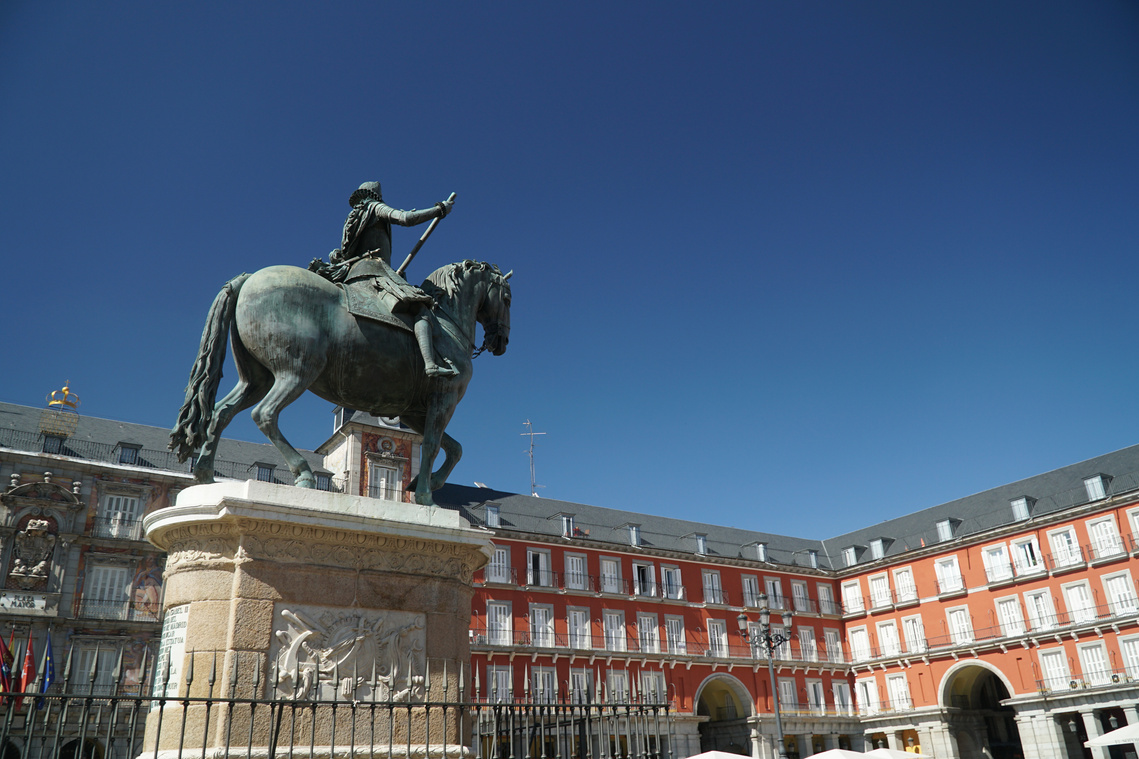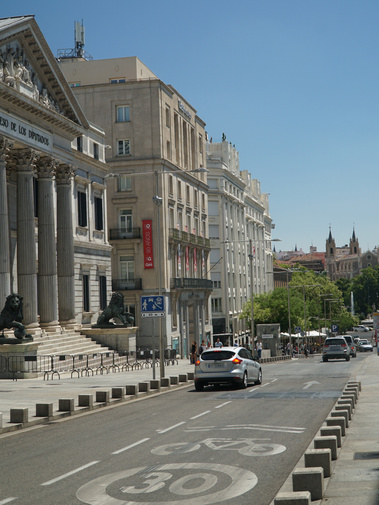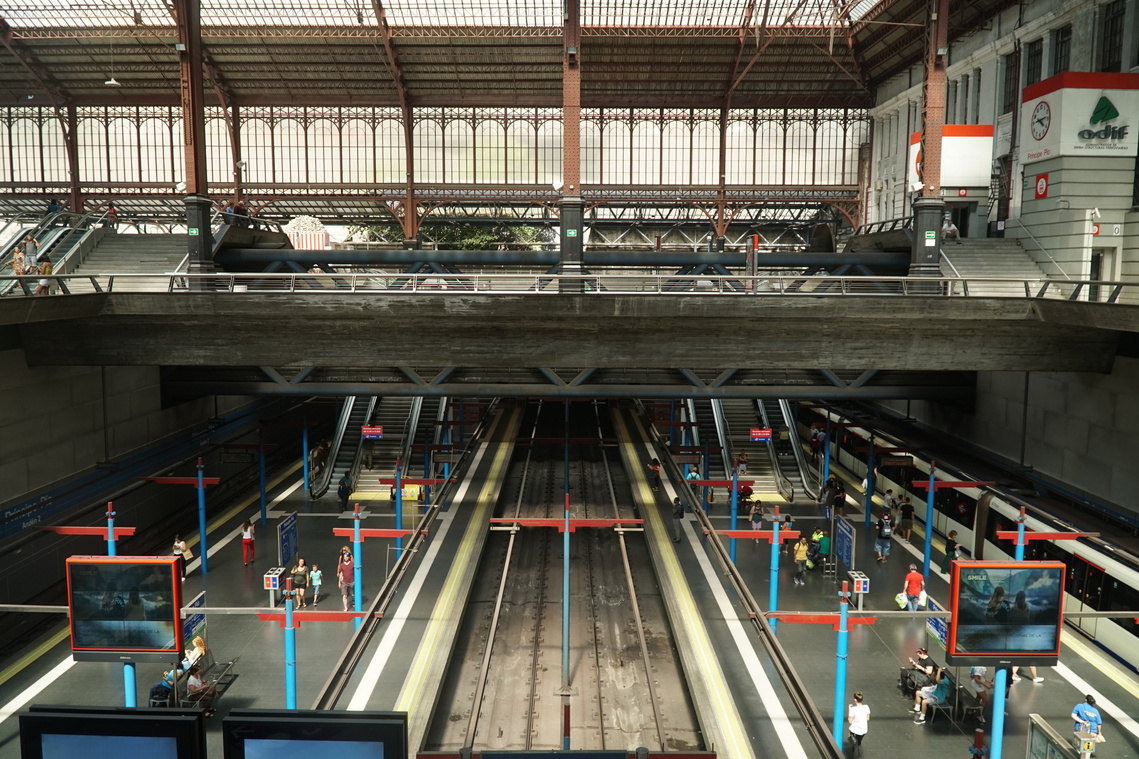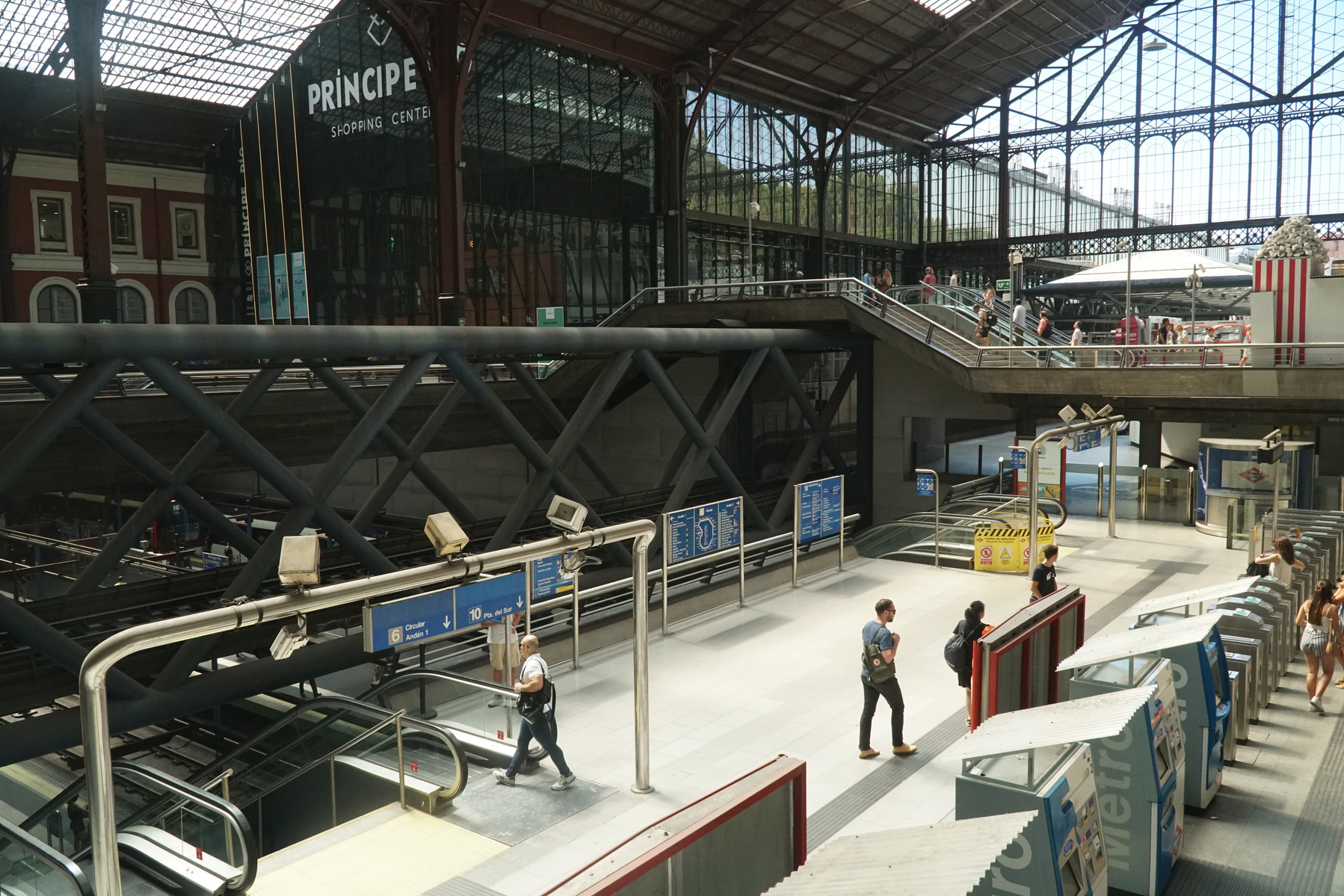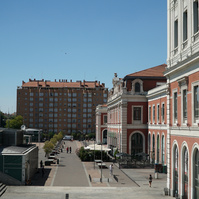Madrid
July 29 - August 2
City in Context
The region of Madrid is one of 17 autonomous regions in Spain, formed up by 179 municipalities. The Madrid metropolitan region has over 6.5 million inhabitants in an area of 8,028.5 square kilometers, with 12.9 million trips on the average weekday.
I wanted to visit Madrid given its extensive public transport system, consisting of 293 kilometers of subway lines and nine commuter train lines with 89 stations that link the metropolitan area to the city. The bus network is also impressive: 200 lines travel on 775 km of routes, complementing the subway network by serving areas it does not reach. What’s more, recent steps have been taken to get peiple moving by bicycle. Despite Madrid’s hilly terrain, 1,560 electric bikes in the public bike share system provide citizens with the flexibility to grab a bike to their destinations. The city’s wide avenues and four major ring roads serve commuter vehicle traffic as well, all linked by a radial road network. 43% of the city’s transport network is intended for pedestrians; 42 per cent of citizens use public transport, 29 per cent walk and 29 per cent use private vehicles. In spite of the already positive modal split, the Madrid Sustainable Urban Mobility Plan (SUMP) intends to further discourage the use of private cars in favour of PT and active modes in order to reduce negative impacts of car traffic and improve citizens’ quality of life.
The Plan calls for 95 specific measures to be implemented by 2020, with the aim to achieve a 6% reduction of traffic in the city in favour of pedestrian mobility, bicycle use and public transport. One measure includes a smart Regulated Parking Service (SER) that manages, regulates and controls vehicle parking in certain areas of the public thoroughfare in Madrid, with the goal being to rationalize and make compatible the use of public space and vehicle parking. Another is an initiative to improve the cycle path network, which has been allocated $44 million in 2016 and comes with 33 new cycle paths. The city’s mayor, Manuela Carmena, has also promised to ban cars from the city’s main street, Gran Via, with only bicycles, buses, and taxis allowed access. These are but a few prominent measures Madrid is seeking to implement to increase comfort for citizens and improve their quality of life by reducing car use and improving access for active and public transport modes.
The City of Madrid estimates that implementing the measures of the Plan will result in 3.2 million fewer kilometers being travelled by car per day, corresponding to a reduction of 135,000 tons of CO2, 400 tons of NOx and 26 tons of PM2.5. The challenge is to accommodate 130,000 extra journeys per day in 2020 (3.5% increase from 2014) via sustainable modes. For a city that has been plagued with pollution and periods of intense traffic during rush hour, the Plan offers an opportunity to give back space to citizens by reassuring the leisurely character of streets and squares, and the opportunity to increase the social and natural capital for Madrid’s citizens, who wish to live in a healthy, efficient, and comfortable city.
For the history of Madrid's city development, this presentation by Teresa Franchini provides important context beginning in the 19th century.
Public Transport Interchanges in Madrid
Transport interchanges are a crucial part of sustainable transport, allowing travellers to make multi-leg trips with ease and efficiency. Interchanges are large-scale infrastructures which act as access gateways to the city public transport system, optimizing the transfer between different transport modes. They are especially important in large metropolitan areas, where journeys can be long from the periphery to areas with jobs, most typically the city center. Few cities see the necessity of transport interchanges better than in Madrid, where the local Transport Consortium of Madrid has been developing a Modal Integration Plan since 1986. In Madrid, the circular metro line links five interchanges with the main road infrastructures. With the Madrid Metro the backbone of the metropolitan transport system, the urban and metropolitan bus network, suburban railway, and light rail whisk commuters to their final destinations. Larger interchanges have been complemented with smaller interchange infrastructures called “intermodal areas”, which facilitate the transfers between urban bus and metro lines. Overall, Madrid’s Interchanges move more than 1 million users per day and manage the passengers’ flows accessing the city from all its main points of entry.
I visited two of the main interchanges, Principe Pio to the Southwest and Plaza de Castilla in the North, to experience what moving through these interchanges is like.
Principe Pio Interchange Station
The case of the Principe Pío interchange was included in the second phase of the Modal Integration plan, developed between 2004 and 2007.The location of this facility was the old suburban bust terminal that linked Madrid to the Southwest suburbs of the metropolitan area. The Southwest is among the the most populated areas of suburban Madrid, corresponding to an estimated 210,000 users per day. Before the construction of the new interchange about 2,500 daily suburban buses operated in the open area located next to the former Príncipe Pío rail station and around the Glorieta de San Vicente square. Lines 6 and 10 of the Metro and lines C7 and C10 of the suburban trains stopped nearby as well. Furthermore, an obsolete bus station, located in the ground floor of a residential building, was operating long distance lines. The aim of the new interchange was to integrate all these transport modes.
As for implementation, many different stakeholders needed to come together to agree on the delivery of the redesigned Principe Pio interchange. This included the Region, the City of Madrid, and the regional Transport Consortium of Madrid. In order to make the project economically feasible, the project was delivered as a public-private partnership, allowing for private investment and the concession of the management and operation of the interchange to a private company, and ownership of the infrastructure to the public. The build-operate-transfer (BOT) contract stipulate that revenues would come from a fee paid by every bus using the facility, rents from shopping areas, and parking lots. To read more about private funding and management for public interchanges in Madrid, this excellent article by Maria Lopez-Lambas and Andres Monzon is very informative.
The new facility was built below area where suburban buses used to operate. Its total surface amounts to 28.300 m2, distributed in two floors underground where the new 32 bus platforms and the bus track are designed following a ring-shaped distribution around a waiting central area for passengers. The new interchange was linked to the existing metro and suburban train stations, seeking easy and efficient changes. The works were completed with the construction of a tunnel that links the buses track straight to the A5 motorway, which exclusively serves the new interchange station, which was completed in May 2007.
Plaza de Castilla Interchange
The Plaza de Castilla interchange was redesigned in 2004, given previously the base operated perpendicular to traffic, creating interference issues between buses and travellers. These functional issues were compounded by the poor environmental quality surrounding the interchange, and the square was unattractive for business and office spaces.
Today the interchange seamlessly connects three underground metro lines with dozens of regional and urban bus lines. The full project consists of the development of a building on three levels, with capacity for 34 bus bays, public access from street lines from the Metro, without there being any conflict raised by crossing of buses. The space freed on the surface by the removal of the suburban buses was reorganized to suit urban buses belonging to the EMT, with a terminal building and a direct connection to the Metro network and the rest of the transport interchange station. The whole station is built upon a major underpass of the city, and includes facilities like a car park, shops and waiting areas. Like the Principe Pio interchange, the interchange's design provides clear signage and real-time information to passengers.
From a civil engineering perspective, the construction of the transport interchange station was a major challenge. The main structural challenge relating to the construction was the complexity of the urban environment in which the work was carried out; excavating to a depth of 20 meters next to the facades of the Caja Madrid tower (115 meters tall) and within a few meters of the Metro Line 9's tunnel afforded little room for error. Rigorous monitoring and controlling of any deformations in the screen walls and ensuring that no loads were placed on the existing Metro tunnel allowed the interchange to continue to serve thousands of passengers daily both during construction and upon completion.
Interview with Carlos Rodriguez, Transport Engineer at TYPSA
One evening in Madrid, I met with Carlos to get the Spanish perspective on urban mobility trends. We began with his background in civil engineering at the University of Seville, and how from early on he became interested in the world of transportation through his time at school. This led to how he began his career at TYPSA, a Spanish engineering design and consultancy firm based in Madrid. He began as an intern working on transportation engineering projects across countries, and was offered a full-time position earlier this year. Since then, he has been pursuing his masters degree in transportation studies to become more specialized in this dynamic field.
From our conversation, I learned a bit more about how mobility is organized Madrid. He said the region is lucky to have one of the strongest consortia, the CRTM, which commands over different public and private companies to run different services. For example, the Metro is a private company, while urban buses belong to the City Council, and light rail is run by the national government. All of these services are integrated into one card, that has flat rates and different discounts on offer.
I really enjoyed our time together, and count myself lucky to have met someone just starting out in his career to get some advice on what it is like to work in the transport sector and begin a new career after time in university.
